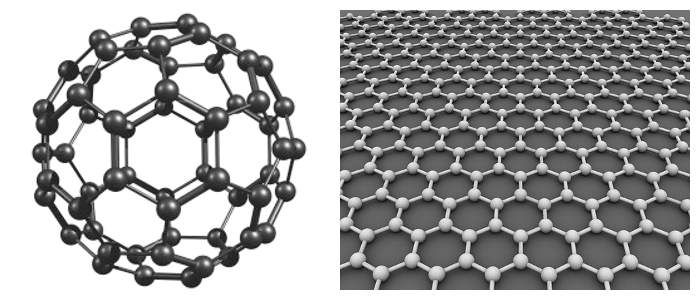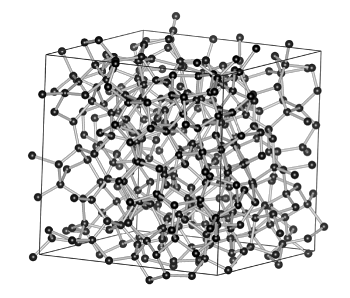Amorphous Diamond
March 5, 2018
I'm showing my age as I fondly recall watching the
Doublemint Twins television commercials of the early
1960s.[1] These commercials in glorious,
low resolution,
black-and-white continued for many years thereafter, eventually transitioning to
color. They portrayed
identical twin American teenagers, exclusively
white for at least the first
decade (see
cartoon), who appeared to be having a lot of fun while
chewing the
Wrigley brand gum.

People from the Mediterranean countries have darker skin than most people identified as Caucasian. (Nympha Palermo by Gemma Grimaldi, Cartoon No. 24, "Barbie.")
While Wrigley's had
provenance of the identical twin landscape of television commercials, that didn't stop
Warner-Lambert from launching similarly themed commercials for
Certs.[2] The memorable part of these commercials was the
debate about whether Certs was a
breath mint or a
candy mint. This question was resolved by declaring Certs to be
both a candy mint
and a breath mint.
Warner-Lambert, however, decided that Certs was actually a breath mint in 1999, when the
United States Customs Service decided that Certs was a candy in the more highly
taxed tariff class 2106.90.99. On appeal to the
Court of Appeals for the Federal Circuit, Warner-Lambert's argument that Certs should be classified as
3306.90.00, "Preparations for oral or dental hygiene," was upheld.[3] So,
legally, Certs is a breath mint.
The
chemists among us may remember another part of the Certs
advertising campaign, that each Certs mint had a "golden drop of Retsyn." Retsyn is the
trademark for a
mixture of
copper gluconate, partially
hydrogenated cottonseed oil, and
flavoring, and it's the
copper gluconate that gives Certs its
green flecks. There's actually more than
marketing behind the addition of Retsyn to Certs, since copper is known to have
antimicrobial properties.

Chemical structure of copper gluconate. Copper gluconate, which is water soluble, is the copper salt of D-gluconic acid. (Image by Edgar181, modified, via Wikimedia Commons)
Gerald Holton, in his 1973 book, "Thematic Origins of Scientific Thought: Kepler to Einstein," wrote about a
scientific analogy to the dual resolution of the Certs
dichotomy.[4] In this book, Holton defined important
conceptual elements in the
physical sciences that he called thema. While thema such as
conservation laws help to guide scientific development, the most fundamental thema coexist with their antithetical, anti-thema. An example of this is
wave-particle duality. Apparently, great
physics involves entertaining two contradictory
ideas at the same time.
I thought of this when I read the title of a recent
open access paper, "Deduced elasticity of sp
3-bonded amorphous diamond," in
Applied Physics Letters (APL).[5-6] Indeed,
diamond is defined by one particular
structure; namely, the
diamond cubic crystal structure having the the Fd(3-bar)m
space group. If the structure is
amorphous, then it isn't diamond. Of course, I realized that the
authors intended to distinguish diamond-like properties from those of
amorphous carbon; and,
sp3 bonding is what's found in diamond, not
graphite. So, this
allotropic form of carbon is both diamond, and not really diamond - It's two
materials in one.
By now we're accustomed to the plethora of
carbon allotropes, most of which are listed below:
• Diamond
• Graphite
• Graphene
• Amorphous carbon
• Buckminsterfullerene
• Carbon nanotubes
• Glassy carbon
• Lonsdaleite (hexagonal diamond)
• Linear acetylenic carbon

Diagram of buckminsterfullerene (C60), left, and a pictorial representation of a graphene sheet. These dissimilar-looking materials both have carbon atoms that are sp2 bonded. (C60 image from Moscow Institute of Physics and Technology State University. Graphene image by Alexander Alus, via Wikimedia Commons.)
The
synthesis of amorphous diamond was first reported last year by a
Chinese and
American research team with members from the
Center for High Pressure Science and Technology Advanced Research (HPSTAR, Shanghai, China), the
Carnegie Institution of Washington (Argonne, Illinois, and Washington, DC),
Argonne National Laboratory (Argonne, Illinois),
Stanford University (Stanford, California), and the
SLAC National Accelerator Laboratory (Menlo Park, California).[7]
High pressure and
in situ laser heating were used to convert
glassy carbon into amorphous diamond that was stable when brought to
room temperature and pressure. This material was shown to have sp
3 bonding between carbon atoms and an
incompressibility that was comparable to that of
crystalline diamond.[7]

Structural model of amorphous diamond, as deduced by a computer simulation.
(Fig. 4a of Ref. 7, licensed under the Creative Commons Attribution 4.0 International License.)
The paper in Applied Physics Letters was authored by the
father-
son team of
Arthur Ballato and
John Ballato.[6] Arthur Ballato is the retired
Chief Scientist of the
US Army Communications-Electronics R&D Center,
Fort Monmouth, New Jersey. The APL paper computes some
physical properties of amorphous diamond using a
methodology (Voigt-Reuss-Hill) in which
crystal values are averaged over all
orientations to give the values for the amorphous
phase.[5]
While all carbon atoms (ignoring the small fraction that are on the surface) in actual diamond are sp
3-bonded, amorphous diamond has a small fraction of
sp2-bonded carbon atoms, the same bonding found in
graphite.[6] Still, the amorphous material shows very desirable
mechanical properties.[6] The
Clemson team calculated the
elastic and
mechanical properties by the Voigt-Reuss-Hill methodology, named after its creators. Voigt averaged
elastic stiffness constants over all directions in space to estimate the properties of an amorphous solid based on its crystalline counterpart, Reuss did the same for the
elastic compliance constants, and Hill produced a synthesis of these methods.[5]
The approach involves
relaxing the single crystal constants to obtain equivalent
isotropic values for the amorphous solid.[5] The Clemson team had previously applied this methodology to glassy
sapphire.[6] Says John Ballato,
"We employed a modeling approach by which one can use the properties of crystalline diamond to deduce the properties of the glassy diamond analog... In this work, we inferred the elastic properties of this new phase of diamond from measured properties of crystalline diamond."[6]
The calculated mechanical constants for amorphous diamond appear below.[5]
For comparison, the Young's modulus of diamond is 1220
GPa, and its
Poisson's ratio is 0.2.
References:
- 1950s-60s Wrigley's Doublemint Commercial (Violin Players), YouTube video by HRTVFan2, October 30, 2015.
- Vintage - Certs Breath Mints Commercial, YouTube video by Ron Flaviano, October 17, 2011.
- WARNER LAMBERT COMPANY v. UNITED STATES, United States Court of Appeals,Federal Circuit, WARNER-LAMBERT COMPANY, Plaintiff-Appellant, v. UNITED STATES, Defendant-Appellee, No. 04-1489, Decided, May 11, 2005 (via findlaw.com).
- Gerald Holton, "Thematic Origins of Scientific Thought: Kepler to Einstein," Harvard University Press, New edition (May 25, 1988), Paperback, 504 pages, ISBN-13: 978-0674877481 (via Amazon).
- J. Ballato and A. Ballato, "Deduced elasticity of sp3-bonded amorphous diamond," Applied Physics Letters, vol. 111, no. 22 (November 28, 2017), Article no. 221901, doi: https://doi.org/10.1063/1.5005822. This is an open-access article with a PDF file here.
- Deducing the properties of a new form of diamond, American Institute of Physics Press Release, November 30, 2017.
- Z. Zeng, L. Yang, Q. Zeng, H. Lou, H. Sheng, J. Wen, D. J. Miller, Y. Meng, W. Yang, W. L. Mao, and H. K. Mao, "Synthesis of quenchable amorphous diamond," Nature Communications, vol. 8, Article no. 322 (August 27, 2017), doi:10.1038/s41467-017-00395-w. This is an open-access article with a PDF file here.
Linked Keywords: Doublemint Twins; television advertisement; television commercial; 1960s; low resolution; black-and-white; color television; identical twin; American; adolescence; teenager; white people; decade; cartoon; chewing; Wrigley Company; Wrigley brand; chewing gum; Nympha Palermo by Gemma Grimaldi; people; Mediterranean Sea; country; skin; Caucasian race; provenance; Warner-Lambert; Certs; debate; breath mint; candy; United States Customs Service; tax; tariff; class 2106.90.99; United States Court of Appeals for the Federal Circuit; 3306.90.00; law; legal; chemist; advertising; trademark; mixture; copper gluconate; hydrogenation; hydrogenated; cottonseed oil; flavor; flavoring; copper; green; marketing; antimicrobial properties; structural formula; chemical structure; solubility; water soluble; copper; acid salt; D-gluconic acid; Edgar181; Wikimedia Commons; Gerald Holton; science; scientific; analogy; dichotomy; concept; conceptual element; physical sciences; conservation law; wave-particle duality; physics; idea; open-access journal; open access paper; Applied Physics Letters; diamond; crystal structure; diamond cubic; space group; amorphous solid; author; amorphous carbon; sp3 bonding; graphite; material; carbon allotrope; diamond; graphite; graphene; buckminsterfullerene; carbon nanotube; glassy carbon; lonsdaleite (hexagonal diamond); linear acetylenic carbon; carbon; atom; sp2-bonded; Moscow Institute of Physics and Technology State University; chemical synthesis; Chinese; American; research; Center for High Pressure Science and Technology Advanced Research (HPSTAR, Shanghai, China); Carnegie Institution of Washington (Argonne, Illinois, and Washington, DC); Argonne National Laboratory (Argonne, Illinois); Stanford University (Stanford, California); SLAC National Accelerator Laboratory (Menlo Park, California); high pressure; laser; glassy carbon; standard conditions for temperature and pressure; room temperature and pressure; incompressibility; crystal; crystalline; structural model; computer simulation; Creative Commons Attribution 4.0 International License; father; son; Arthur Ballato; John Ballato; Chief Scientist; US Army Communications-Electronics R&D Center; Fort Monmouth, New Jersey; physical property; physical properties; methodology; crystal; Miller index; orientation; phase; Clemson University; elasticity; elastic; elastic stiffness constant; Hooke's law; elastic compliance constant; isotropic; sapphire; inference; infer; c11; c12; c44; Young's Modulus; bulk modulus; Poisson's ratio; pascal (unit); GPa.